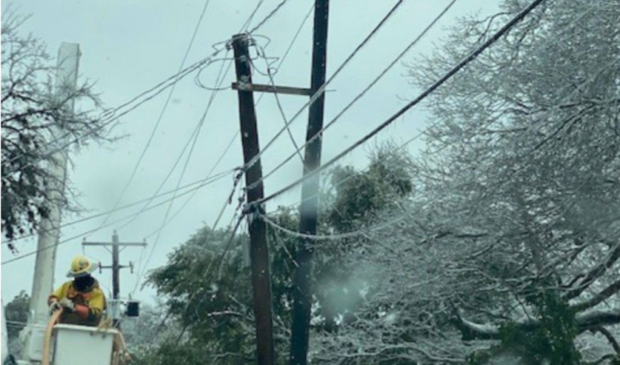‘We did the best we could’: Commissioners evaluate Austin Energy’s winter storm response
Thursday, March 11, 2021 by
Jonathan Lee At a special called joint meeting Monday, commissioners from the Electric Utility and Resource Management commissions praised Austin Energy’s response to last month’s winter storm that left hundreds of thousands of people without power for days. Commissioners also offered ideas on how the utility could improve if a similar scenario were to occur again.
Resource Management Commissioner Kaiba White summarized the prevailing opinion: “The mentality seems to be that we did the best we could, everybody was working super hard, and yet we all recognize that things still need to be improved upon so our community is not harmed in the way that it has been and continues to be.”
Local, state and federal bodies will be tasked with evaluating Austin Energy’s performance during the storm. The utility, for its part, will put together a detailed “after-action report” outlining what happened and what it must do better.
The power crisis began when ERCOT, the body that oversees the grid in much of Texas, ordered Austin Energy to immediately turn off a certain amount of power during the winter storm in order to prevent a catastrophic grid collapse. “When ERCOT gives a load shed directive, it is not a negotiation,” Austin Energy’s Sidney Jackson said.
The desperate move threw 220,000 of the utility’s customers into prolonged cold and darkness.
“Much of the post-event analysis will be about how effectively Austin Energy … executed (ERCOT’s) load shed directives,” Jackson said.
Austin Energy must also figure out how to minimize impacts to its customers if a similar situation happens in the future.
Commissioners suggested several solutions, including investing in large- and small-scale battery systems and backup generators, and even tapping into battery-powered Capital Metro buses to contribute to the city’s power supply during a blackout. Another solution floated was demand-side energy management – telling customers to cut power usage.
Electric Utility Commissioner Rachel Stone suggested reviewing building energy efficiency standards and regulations, noting that as some buildings lost power, especially old multifamily buildings, they lost heat faster than others, creating a more dangerous situation.
Commissioners agreed that weatherizing the utility’s power plants is a must. “Essentially all our plants had some compromise,” Jackson said. Even so, the plants fared relatively well: “They were all returned to service, what I would consider fairly promptly.”
Partly because of this, Austin Energy also fared well financially through the crisis. The utility reported Tuesday that it had earned more than $54 million because it was able to produce – and sell – more energy than it consumed during the freeze. Utilities in other cities lost millions.
Commissioners noted that substantial work needs to take place at the state level before Austin Energy can fully determine how it needs to improve. “What we just experienced was mostly a failure of the ERCOT system,” Electric Utility Commissioner Cary Ferchill said. “Until we figure out how ERCOT is going to address the situation, we can’t figure out our side.”
The Austin Monitor’s work is made possible by donations from the community. Though our reporting covers donors from time to time, we are careful to keep business and editorial efforts separate while maintaining transparency. A complete list of donors is available here, and our code of ethics is explained here.
You're a community leader
And we’re honored you look to us for serious, in-depth news. You know a strong community needs local and dedicated watchdog reporting. We’re here for you and that won’t change. Now will you take the powerful next step and support our nonprofit news organization?










